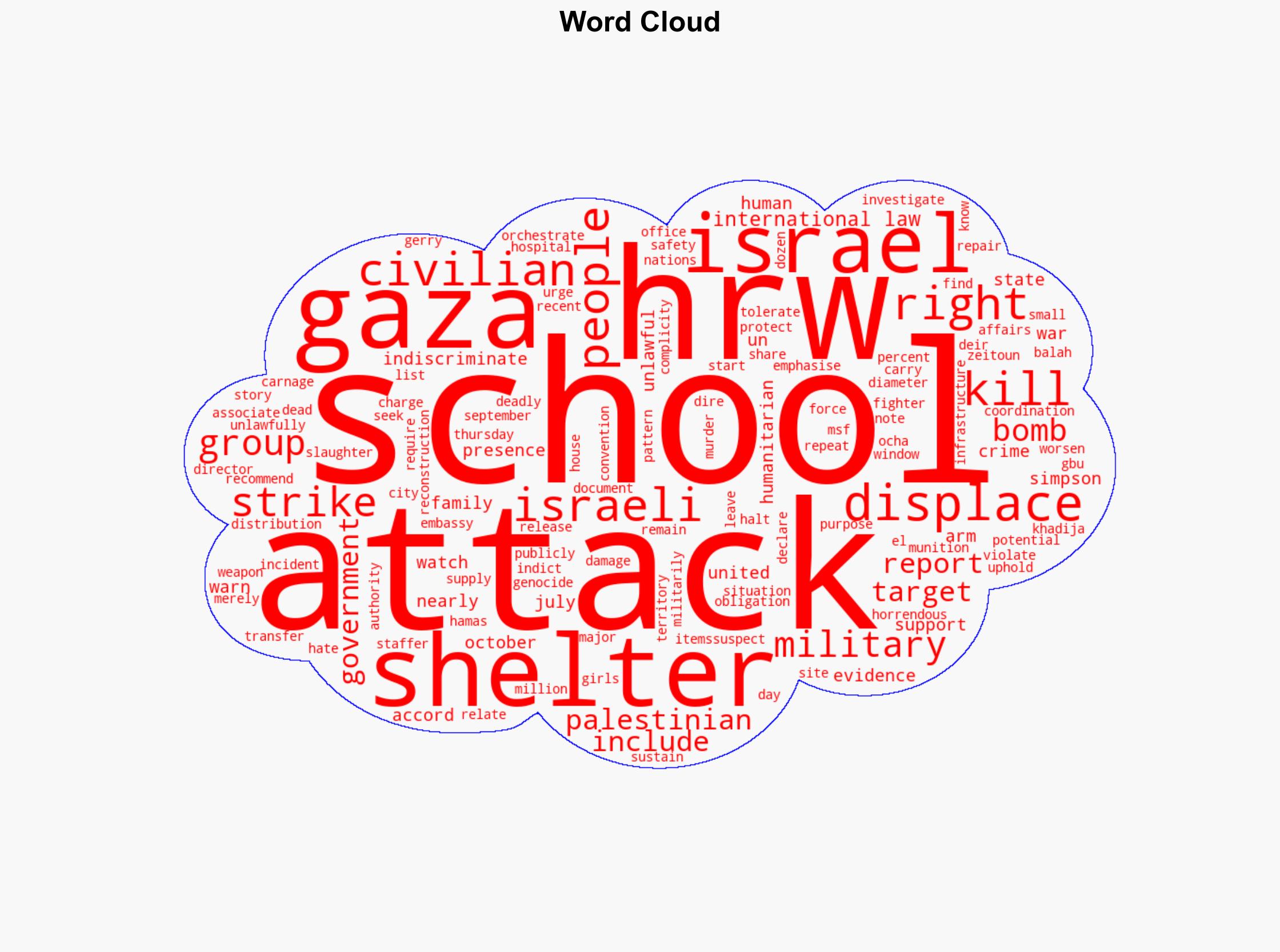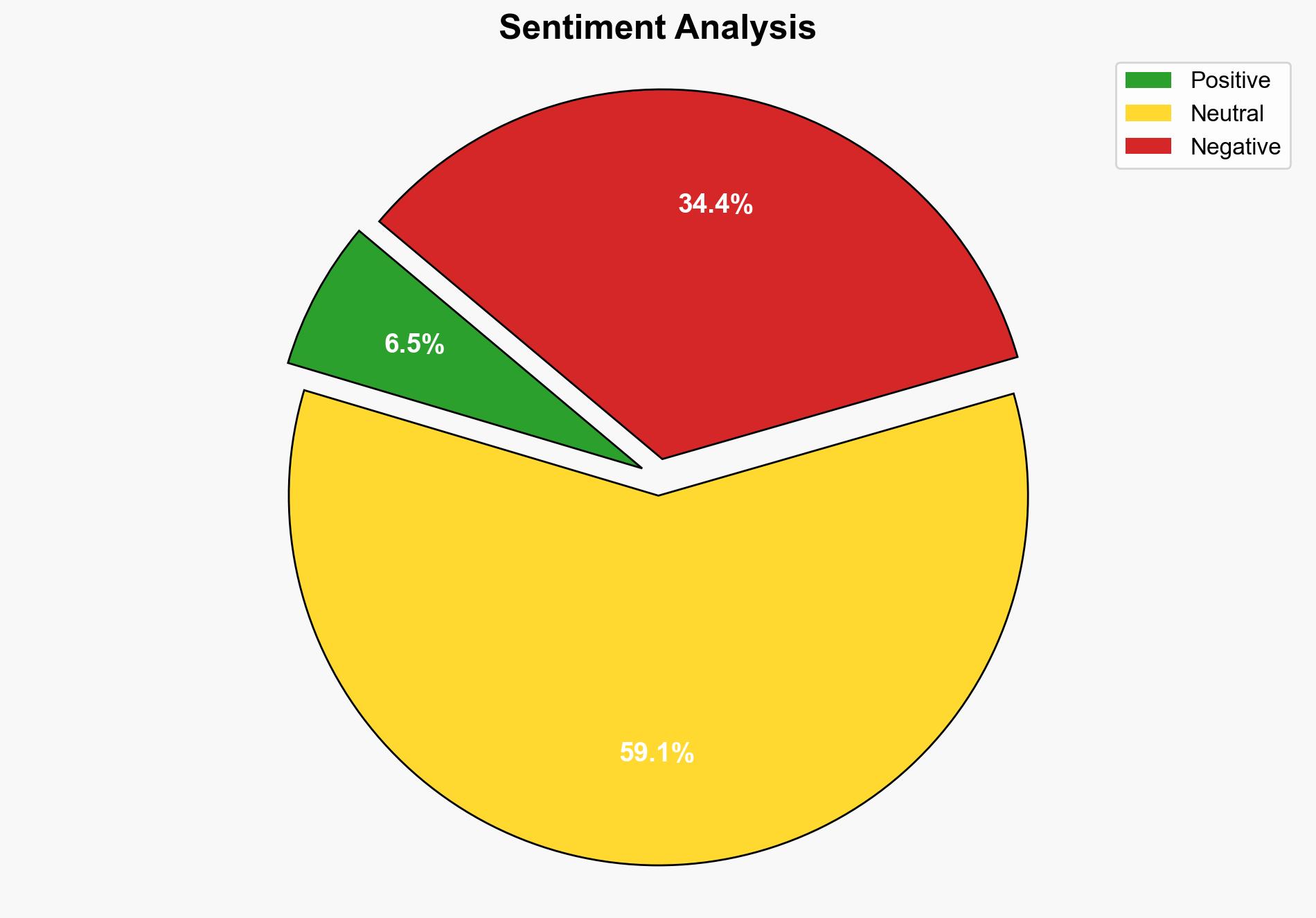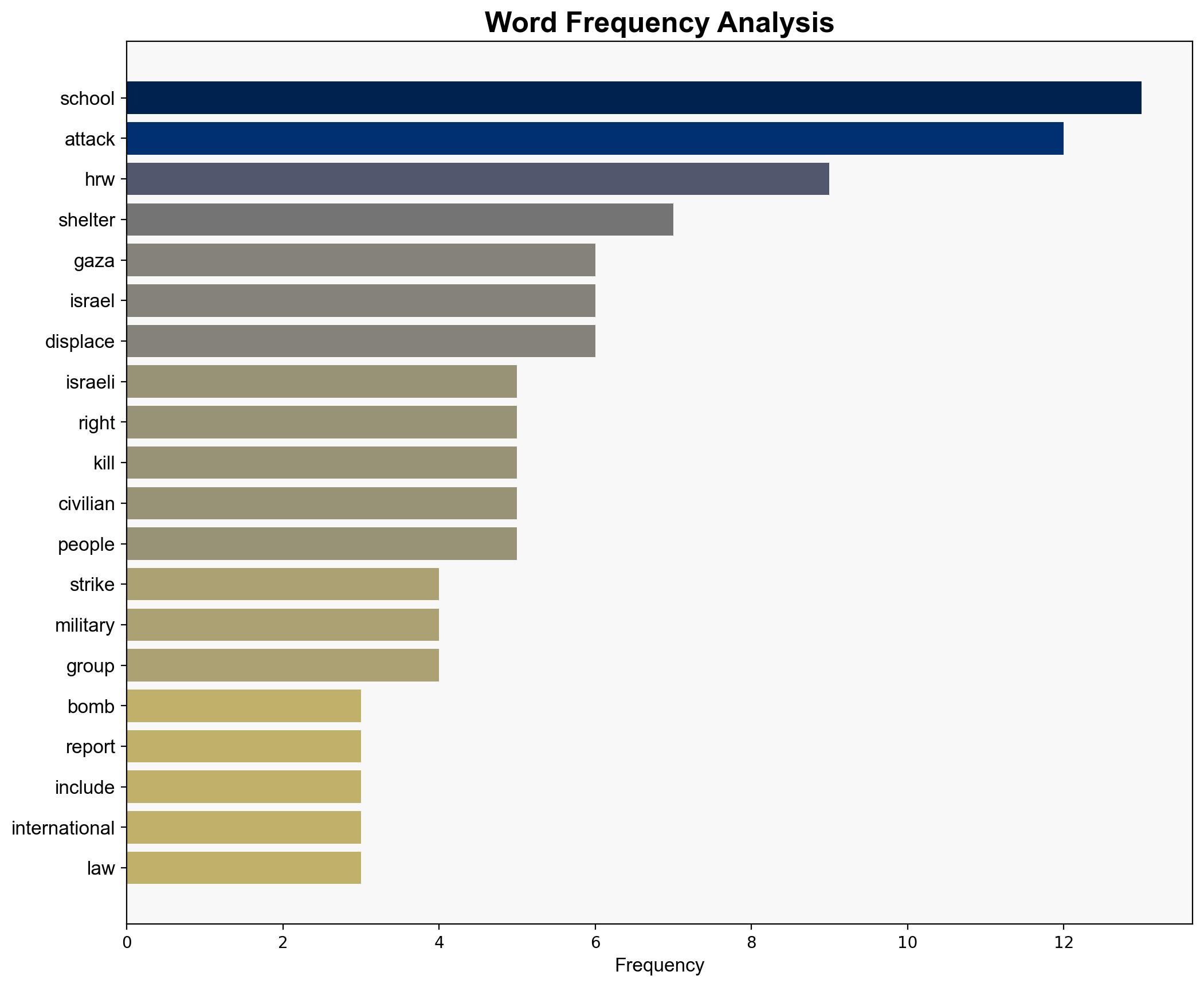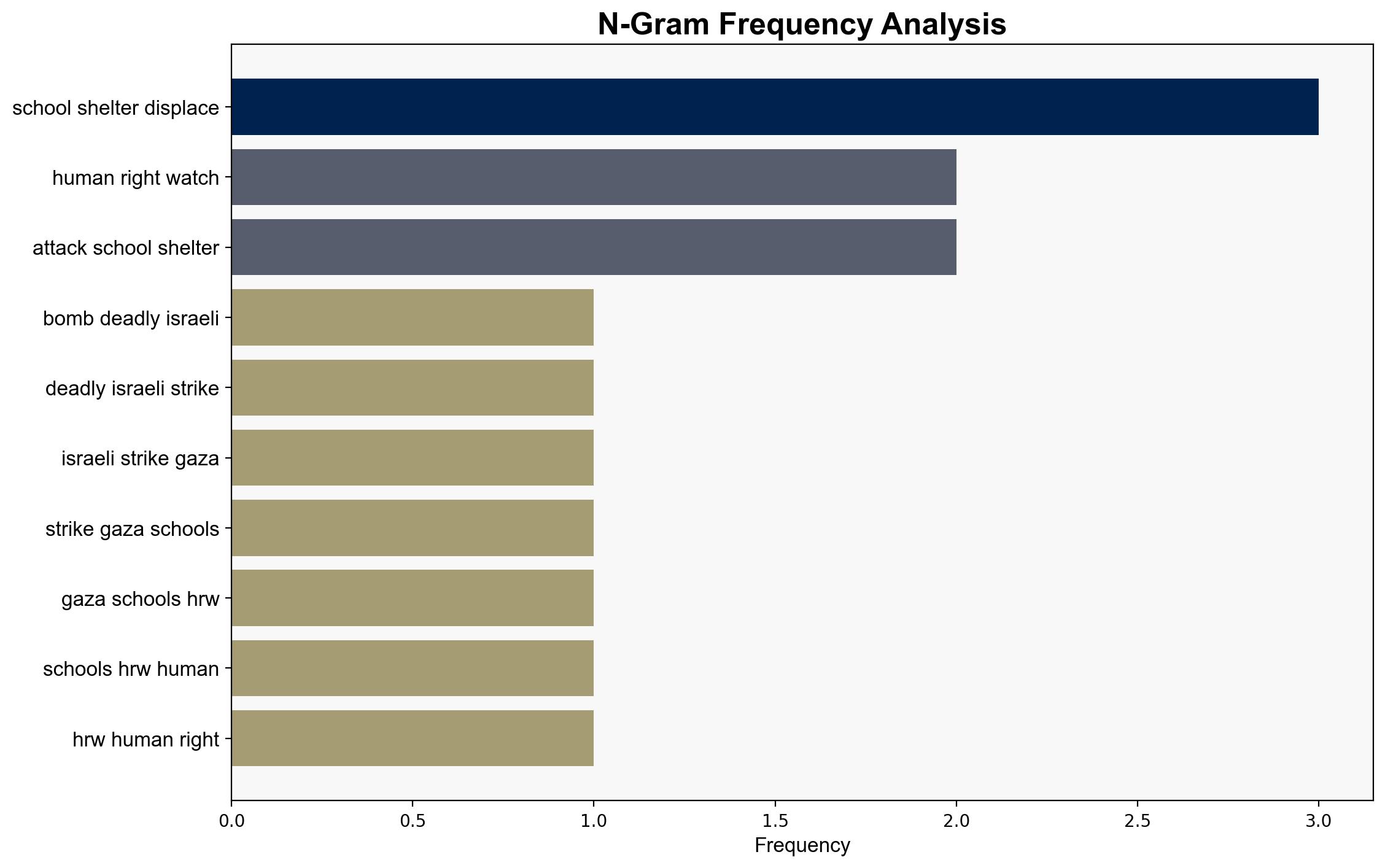US-made bombs used in deadly Israeli strikes on Gaza schools HRW says – Al Jazeera English
Published on: 2025-08-07
Intelligence Report: US-made bombs used in deadly Israeli strikes on Gaza schools HRW says – Al Jazeera English
1. BLUF (Bottom Line Up Front)
The most supported hypothesis is that Israeli military actions in Gaza, involving US-made bombs, have resulted in civilian casualties and potential violations of international law. This assessment is based on reports from Human Rights Watch (HRW) and corroborating evidence of bomb usage. Confidence in this hypothesis is moderate due to limited transparency from Israeli authorities and potential biases in reporting. Recommended actions include diplomatic engagement to investigate the allegations and reassess arms transfer policies to prevent further civilian harm.
2. Competing Hypotheses
1. **Hypothesis A**: Israeli strikes on Gaza schools using US-made bombs were indiscriminate and violated international law, as reported by HRW. This hypothesis is supported by HRW’s findings and the lack of evidence provided by Israeli authorities to justify military targets at the sites.
2. **Hypothesis B**: Israeli strikes targeted legitimate military threats, and any civilian casualties were collateral damage. This hypothesis relies on the assumption that Israeli military actions were based on credible intelligence of Hamas presence in or near the schools.
Using Analysis of Competing Hypotheses (ACH), Hypothesis A is better supported due to the detailed documentation by HRW and the absence of counter-evidence from Israeli sources.
3. Key Assumptions and Red Flags
– **Assumptions**: HRW’s reports are unbiased and accurately reflect the situation on the ground. Israeli military actions were not transparently justified.
– **Red Flags**: Lack of Israeli transparency and potential bias in HRW reporting. The absence of independent verification of military targets.
– **Blind Spots**: Limited access to real-time intelligence and on-the-ground verification of claims.
4. Implications and Strategic Risks
– **Geopolitical**: Escalation of tensions between Israel and Palestine, potentially drawing in regional actors.
– **Humanitarian**: Worsening humanitarian crisis in Gaza, increasing displacement and civilian casualties.
– **Diplomatic**: Strained US-Israel relations if arms transfer policies are scrutinized.
– **Psychological**: Heightened fear and trauma among Gaza’s civilian population, potentially fueling further unrest.
5. Recommendations and Outlook
- **Immediate Action**: Engage in diplomatic dialogue with Israeli authorities to demand transparency and accountability for the strikes.
- **Policy Review**: Reassess arms transfer agreements to ensure compliance with international humanitarian law.
- **Scenario Projections**:
– **Best Case**: Israel provides evidence of military targets, reducing international criticism.
– **Worst Case**: Continued strikes lead to significant civilian casualties, escalating regional conflict.
– **Most Likely**: Ongoing international pressure results in temporary de-escalation but no long-term resolution.
6. Key Individuals and Entities
– **Gerry Simpson**: Associate Director at HRW, vocal on the issue.
– **Human Rights Watch (HRW)**: Primary reporting entity on the allegations.
– **Israeli Military Authorities**: Responsible for conducting the strikes.
7. Thematic Tags
national security threats, international law, arms control, humanitarian crisis, Middle East conflict




